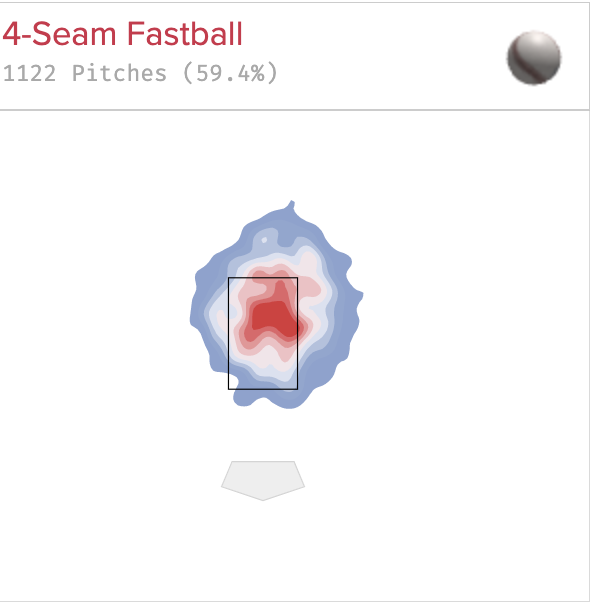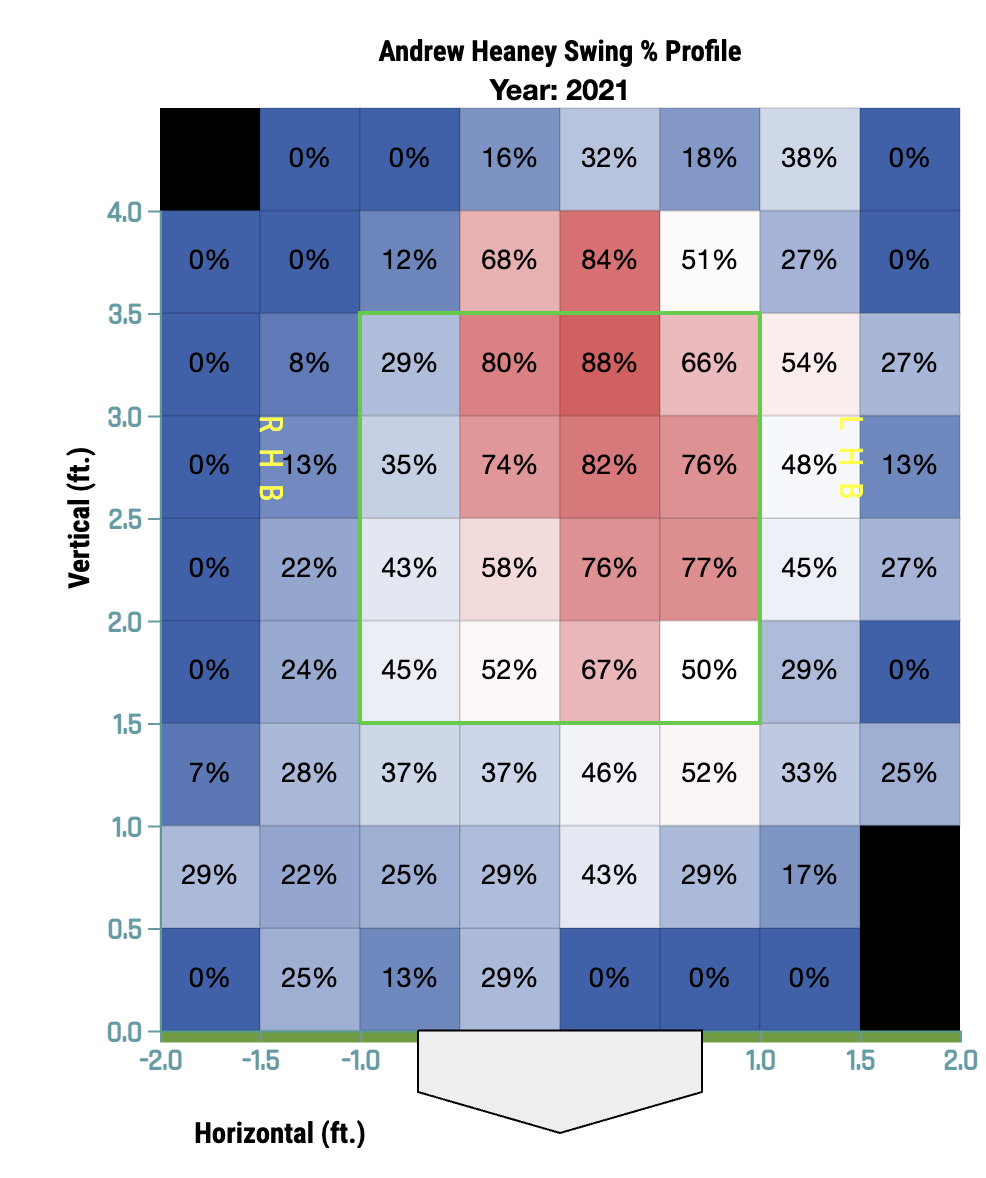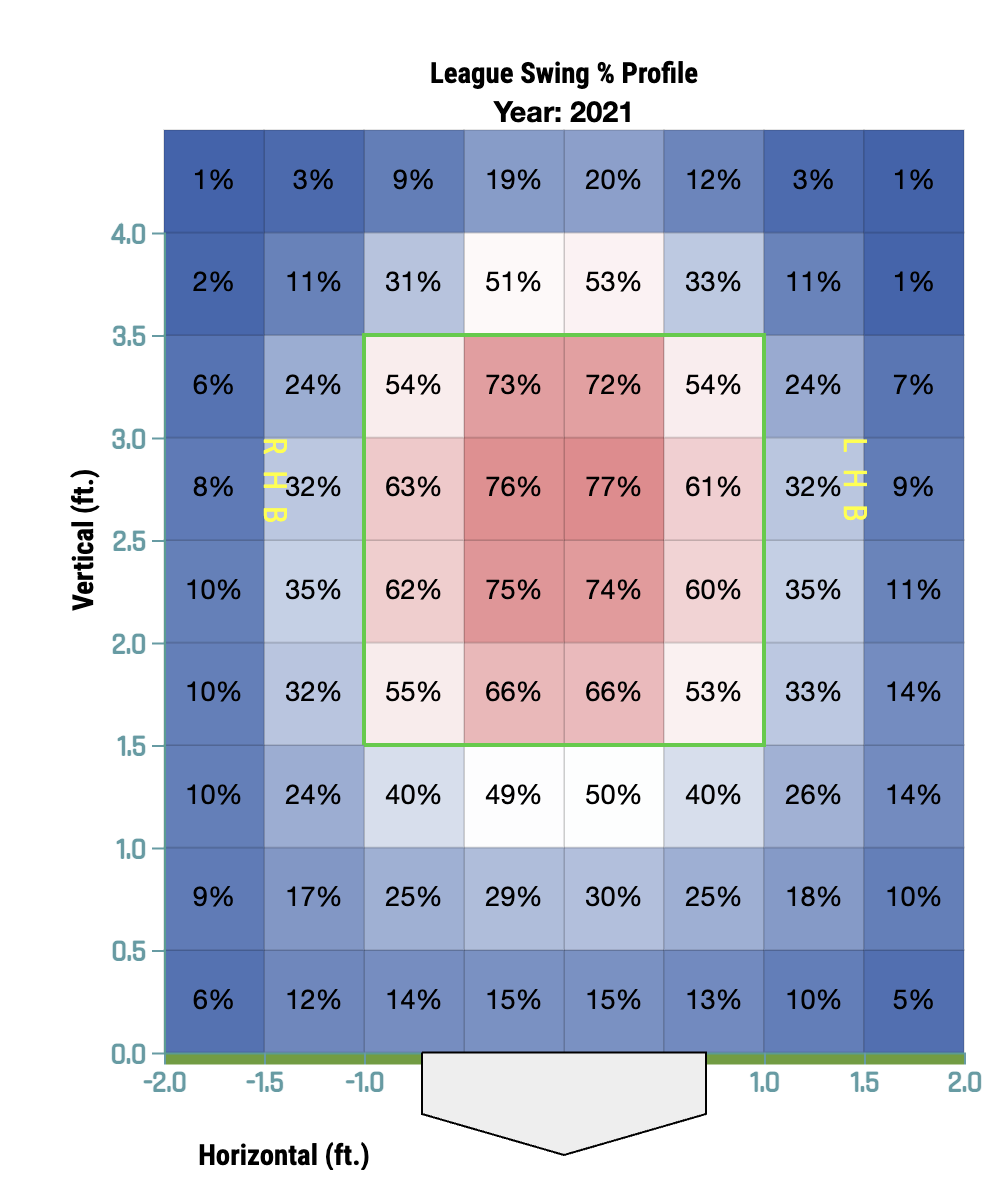The Andrew Heaney cycle is frustrating. He’ll complete a season with a high ERA. But many analysts will point to his FIP or SIERA, which probably sit about a full run lower than his ERA, declaring him as a potential value for the following season. You may hear about some sort of mechanical change Heaney made in the offseason. Then the season starts. By the end of April, his ERA is back above five. He’s striking out a lot of dudes and his walk rate looks solid, but he just can’t keep the ball in the park. And the cycle starts all over again.
This year has been more of the same. Following his forgettable outing in the Field of Dreams Game, Heaney’s ERA now sits at 5.80 for the season, yet his SIERA is 3.80. Carlos Marcano, who hyped Heaney up prior to the season, even started his piece off with, “Andrew Heaney? Really? Isn’t that the guy that has been on the verge of a breakout every season for the last five years?”. Is it finally time to face reality?
Pitch Mix Oddity
Heaney essentially has three pitches and has hardly changed up the usage over the last several years. However, looking at a pitch mix chart, you may not come to that conclusion.

Looking at velocity, spin rate, and movement, Heaney’s “sinker” and four-seam fastball are the exact same pitch. Baseball Savant misclassified Heaney’s four-seamer as a sinker due to its significant horizontal movement. They finally corrected the mistake in 2020. I figured this was worth noting before we get into more analysis, as I will be talking about his four-seamer frequently.
The Problem
I’m not here to give you any sophisticated analysis about why Heaney has struggled so much. His problem is simple: he gives up too many home runs. You can’t help but laugh at Heaney’s PitcherList player page. You’ll see various strengths listed, from eating innings to generating whiffs to first-pitch strikes. However, he just has that one weakness. It’s the only thing holding him back from being a great pitcher.
Andrew Heaney is a flyball pitcher. His 36.5% fly-ball rate on fastballs, the pitch he throws more than half the time, paired with a career 15.8% HR/FB rate (18.5% this season), is not an ideal combination for success. Now, his home ballparks have not been his friend — both Angel Stadium and Yankee Stadium are very prone to the home run ball. However, we can’t attribute his struggles solely to circumstance.
Heaney is a free agent following this season, and it would be interesting to see how he fares in a pitcher’s ballpark, but these issues are not magically going away. He consistently struggles with limiting opponents’ quality of contact. We are well past the point where we can assume a high HR/FB rate signifies regression to the mean is coming.
An Odd Solution
What if I told you a possible solution to Andrew Heaney’s issues is to walk more batters? Don’t close this article yet! Give me a chance to explain myself here. Obviously, putting opposing hitters on base is not the goal. However, if he’s walking more batters, that means he is throwing more pitches out the zone. Therefore, he is throwing fewer pitches down the heart of the plate, where he gets hurt the most. All three of Heaney’s pitches carry an above-average chase rate, so more walks may not be the only result of more pitches out of the zone.

The red area of this heat map of his fastball is too close to the middle of the zone for my liking. The Andrew Heaney resurgence begins with more elevated fastballs, even if it has some negative side effects, like more walks. Here’s an example of what I mean:
https://gfycat.com/popularimperturbablefrigatebird
On the first pitch of his outing, Heaney delivers a fastball right down the middle, which Jose Altuve promptly crushes into the Crawford Boxes. Would a 1-0 count be the end of the world? It’s certainly a better alternative to a run before he gets one out.
Let’s take a look at Heaney’s Zone Swing Profile, which visualizes how often the batter swings at a pitch in each location in and out of the zone.

For reference, here is what the diagram would look like for the league average pitcher in 2021:

I want to point specifically to those pitches at the top and above the zone. The area between (x = -0.5, y = 3.0) and (x = 0.5, y = 4.0) is the target zone for Heaney on his fastball. He generates a solid whiff rate on pitches in that location as well. Right now, he tends to throw the pitch below that area. Regardless, for Heaney’s sake, it is better to miss high than low.
Now, there is one nightmare scenario. If Heaney’s longball struggles continue, more walks can lead to solo homers becoming two-run or three-run homers, which can quickly lead to more disastrous outings. However, I truly believe an increase in walks can help him keep the ball in the park more often. Additionally, if he continues to generate swings and misses on elevated fastballs, he’s going to strike even more batters out.
Obviously, it is great for a pitcher to have a high strikeout rate, but a batter who avoids striking out may not necessarily be all that valuable. Often, batters with low strikeout rates make too much weak contact, which leads to outs anyway. Perhaps the opposite is true for pitchers and walks. We know that it’s great for a batter to walk a lot. However, maybe a pitcher with a low walk rate may not be as valuable as we think. Obviously, some pitchers are pure command artists who can consistently hit their spot. But for others, does a low walk rate imply they are throwing too many hittable pitches?
A Potential Change in Role?
The Yankees have had to deal with numerous injuries to their pitching staff, especially in the second half of the season. While Luis Severino, Corey Kluber, and Domingo Germán remain on the injured list, and Gerrit Cole and Jordan Montgomery are out with COVID, they have had no choice but to turn to Heaney as a starting pitcher every five days. However, with the latter two expected to return this week, the Yankees may opt to move Heaney to the bullpen, especially considering the way he’s been pitching.
Problems solved or not, it’s probably safe to say a healthy Yankees rotation does not include Andrew Heaney. I think a move to the bullpen could benefit Heaney in the short term. He can keep the ball away from the middle of the zone more often, not having to worry about walks as much, since he wouldn’t be asked to eat innings. Additionally, it is easier to get away with throwing one pitch more than half the time as a reliever than as a starter. Wherever he signs as a free agent next year, he will likely be a starting pitcher. However, a new role as a long reliever may be an interesting experiment to help Heaney get back on track.
Design by Michael Packard (@designsbypack on Twitter @ IG)

